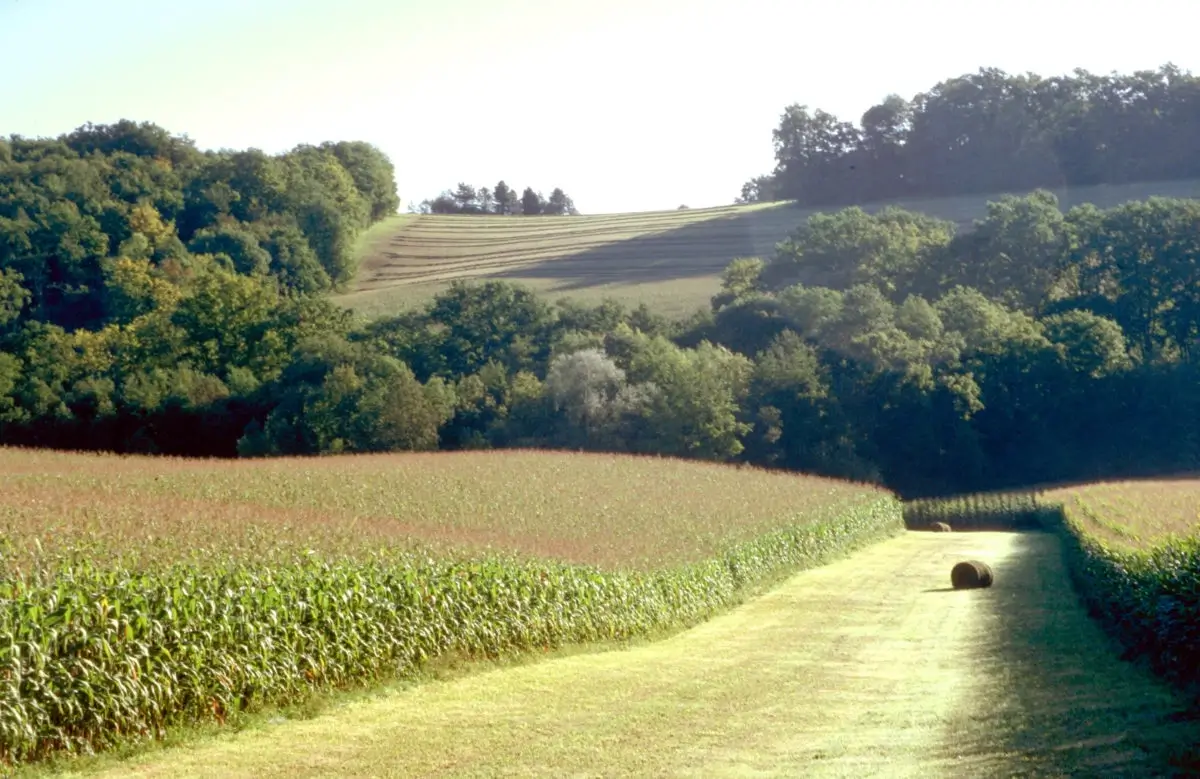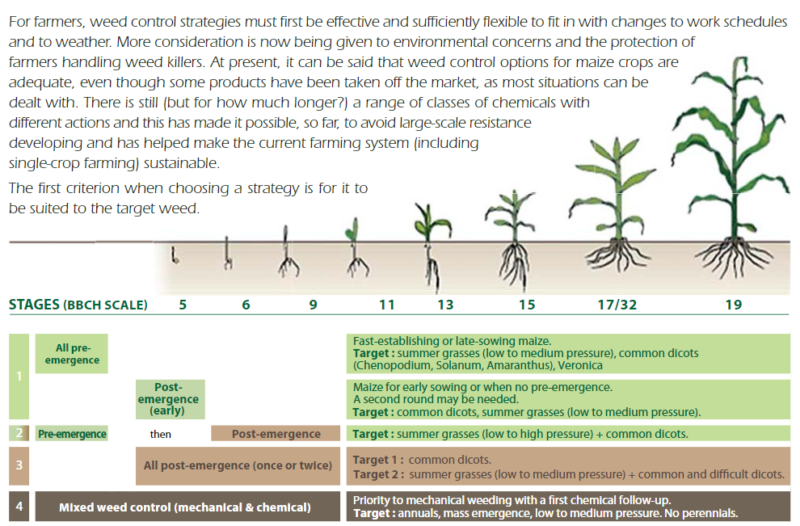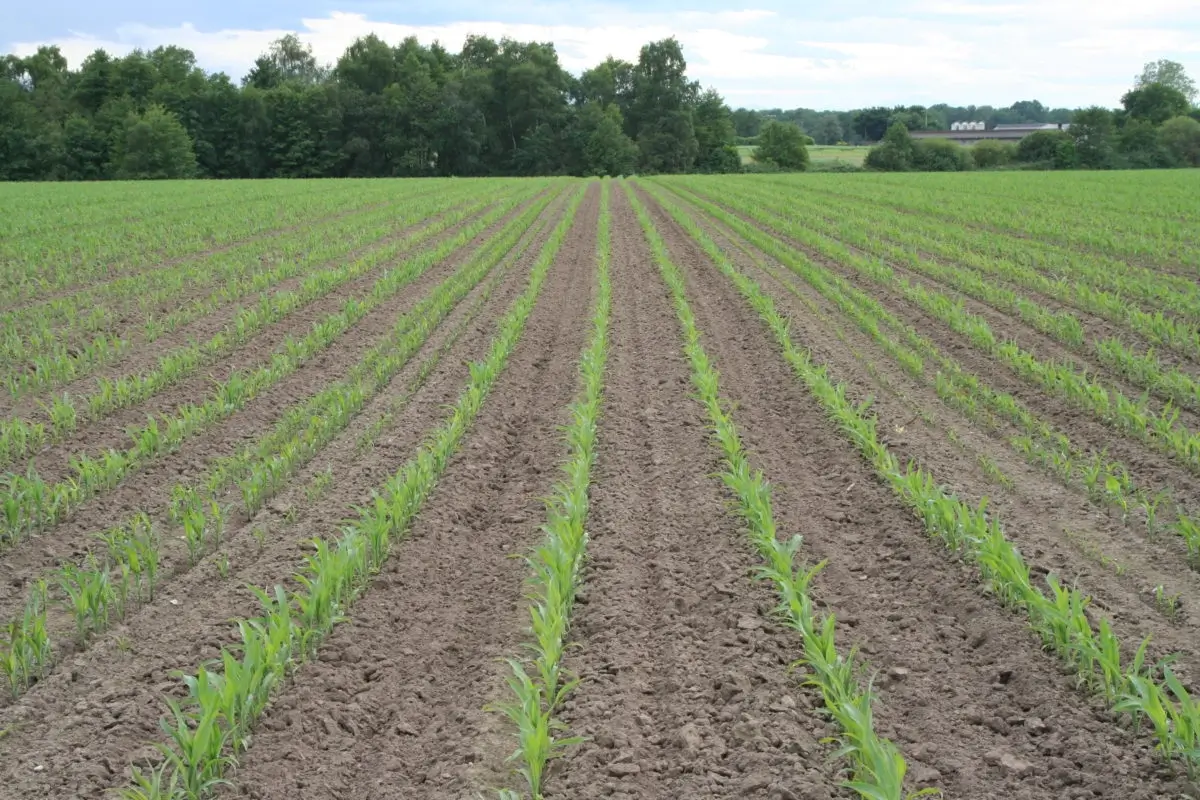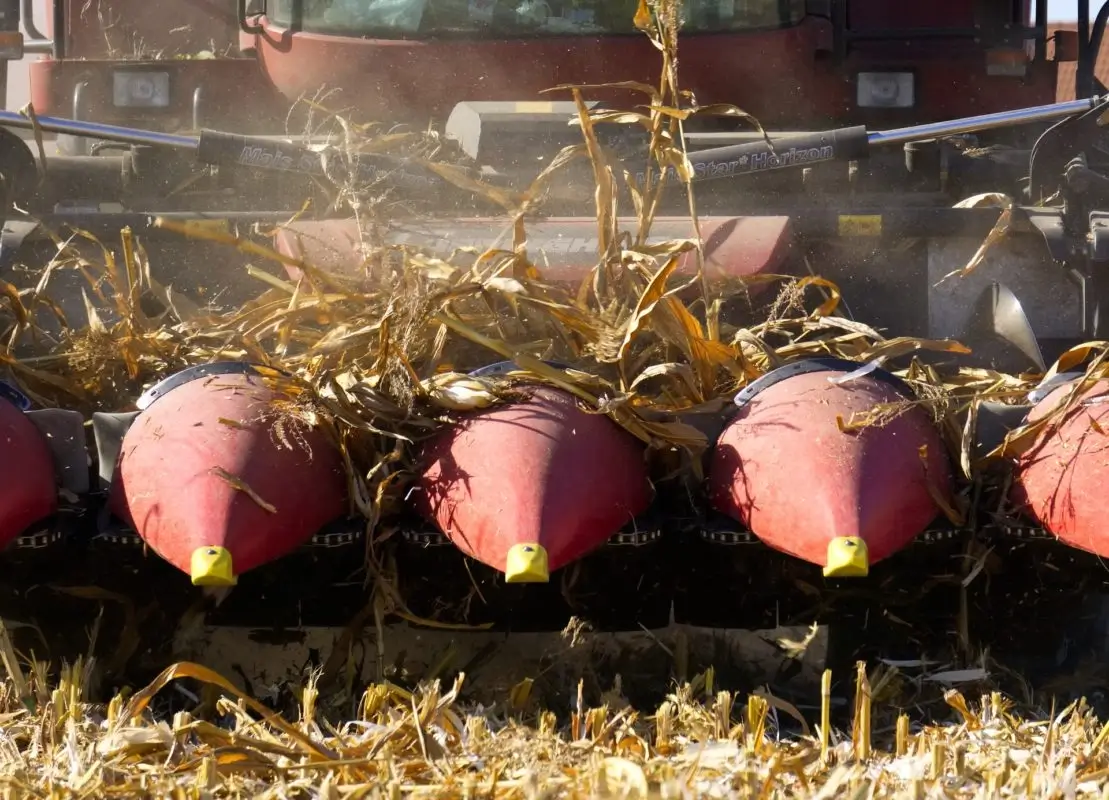Protection
With its diverse genetic ancestry and the continuous selective breeding of varieties, maize has the reputation of being fairly resistant to pests and diseases. However, a number of preventive steps should be carried out to prevent damage and to use effective means of control when necessary.

Residue management
What are the main maize diseases?
– Root necrosis can be induced by a whole range of plant-eating fungi (Pythium, Fusarium, Rhizoctonia). These fungi can be managed locally after symptoms are observed.
– Helminthosporiosis . Also caused by a plant-eating fungus, this damage can result in a 20-50% loss of grain yield.
– Common smut and inflorescence smut. These diseases are rarely damaging.
– Rust, anthracnose, kabatiellosis, these are listed as leaf diseases and also inflict only minor damage.
In addition to affecting yields, these diseases can also compromise fodder quality. These fungi can produce mycotoxins which can develop either during growth or in the silo (fodder maize). In the event of heavy contamination, they can have serious consequences for milk quality, but also for livestock reproduction and health.
In order to anticipate and fight effectively against these diseases, it is essential to observe the plots carefully to be able to measure the risks and take early action. Residue management at the time of harvesting is a very important preventive measure. Crop residues provide a favourable breeding ground for these fungi. Appropriate tillage may therefore be advisable. The choice of varieties is of course another factor. It is advisable to choose varieties that are tolerant and suitably early to avoid the periods of exposure to some of these diseases.

Biocontrol
Birds such as corvids are dreaded by farmers from the seedling to the 6-7 leaf stage. When there is a very large flock, the damage can be considerable. Repellent-covered seeds can be used. It is important not to stagger sowing between plots so as not to let the crows feast on one plot after another.
Maize-boring insects, corn borers, stem borers, wireworms, nematodes, etc., may also cause damage, the severity of which depends on the geographical areas and the agricultural, soil and climate conditions.
As with crop diseases, it is essential to anticipate the risks, rigorously observing the plots to identify insects and the risks entailed. It is also important to properly manage the periods between crops to apply suitable preventive methods, such as burying crop residues or tilling the soil.
Insecticides can be applied during the crop cycle if necessary. Seed treatments are also essential for targeted and effective protection.
Biocontrol solutions are also part of the producers’ arsenal. Applying Trichogramma has been a proven method for decades. Trichogramma are minute wasps that lay eggs inside corn borer moth eggs. This form of biological control is now widely used by producers. New application tools have been developed (drones, straddle tractors, etc.). These are highly flexible to use and save application time in the plots.

Weed control strategies
On the plot and farm scale, weed management also helps to limit the impact of pests and diseases. Note that maize is particularly sensitive to competition from other plants. In fact the wide spacing between rows of maize plants favours the emergence of these weeds, especially at the beginning of the cycle (between 3 and 10 leaves). Later, when the maize plants are well developed, they no longer let in sunlight, so weeds develop less.
The different weed control strategies should target annuals and perennials, grasses and broadleaf weeds. Action can be taken using root solutions before sowing, when weed seeds are germinating. Between sowing maize and its emergence (early post-emergence stage), non-root solutions are preferable. After emergence, non-selective foliar solutions or mechanical weeding will be required.
Mechanical weeding is an additional solution for producers, facilitated by the wide spacing between rows of maize plants. It may be conducted with tools such as hoes, spiked harrows, or rotary hoes before or after crop emergence. This type of weeding, however, is unsuitable for controlling perennials, as it tends to cut the rhizomes without removing them.
The aim is to adopt a combined approach. Chemical and mechanical solutions are not substitutes for each other, but complementary.


